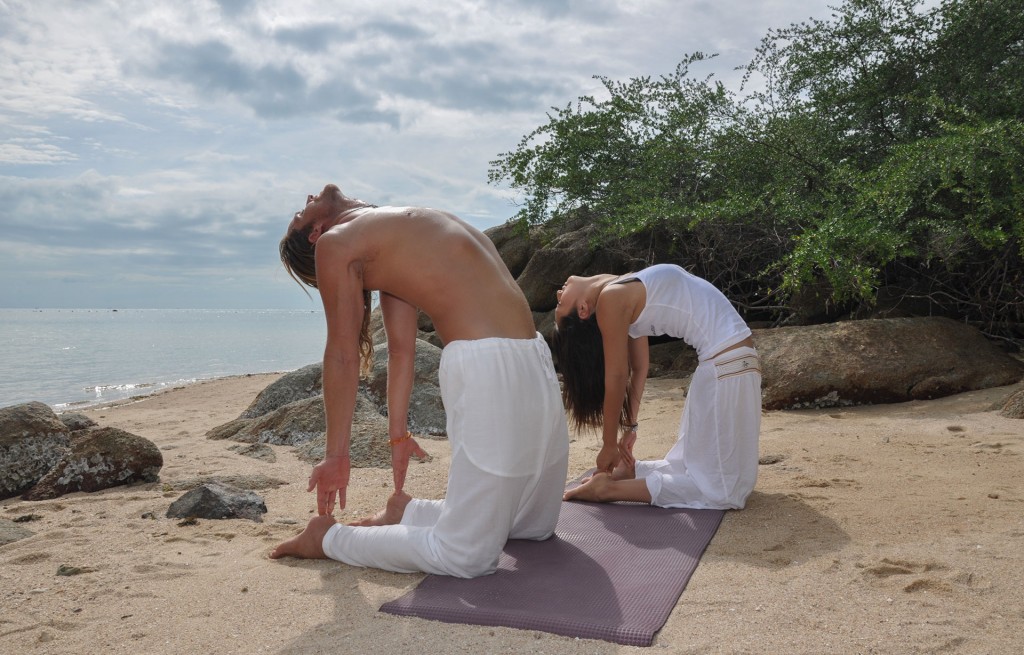 This asana is known as Dandasana or Ustrasana. In English it is known as the pose of the pillar or column (danda means pillar or column), or camel pose (ustra means camel).
This asana is known as Dandasana or Ustrasana. In English it is known as the pose of the pillar or column (danda means pillar or column), or camel pose (ustra means camel).
The camel pose stimulates Manipura chakra. It is one of the basic asanas for those who want to become healers as it increases the energy in the hands and arms.
Ustrasana expands and stretches the front of the body: thighs, groin, abdomen, chest and arms. Improves flexibility of the spine, opens the throat, strengthens the muscles of the neck and back, and increases the blood flow to the brain. The position is very beneficial for those with respiratory problems like asthma and bronchitis, expanding the chest and filling the lungs with a plentiful supply of oxygen. It sets loose the stiffness of the spine, corrects drooping shoulders and humps, helping to have a perfect posture. It also strengthens the muscles of the abdomen and rectum, and prevents sagging.
It is recommended to relieve menstrual discomforts. It is also useful against fatigue and anxiety. Practicing Dandasana daily helps relieve neck back pain caused by slouching in front of a computer. Doctors may also suggest this pose to people suffering from constipation, colitis, dyspepsia, obesity in thighs or arms, and disorders of the kidney, bladder, ovaries, testicles or prostate.
Dandasana removes laziness, lack of enthusiasm, melancholy and replaces them by a spontaneous enthusiasm, optimism and happiness. By strengthening manipura it increases will power, self-confidence and inner strength. Don’t practice this asana before bed, as it is a very energetic asana.
People suffering from high or low pressure, migraine, or severe neck and back problems should consult a doctor before doing this asana. People with an advanced overactive thyroid can do it without tilting the head back. Either way, this pose should be practiced under the supervision of a qualified teacher. For this reason I do not write the specific directions to perform the asana.
